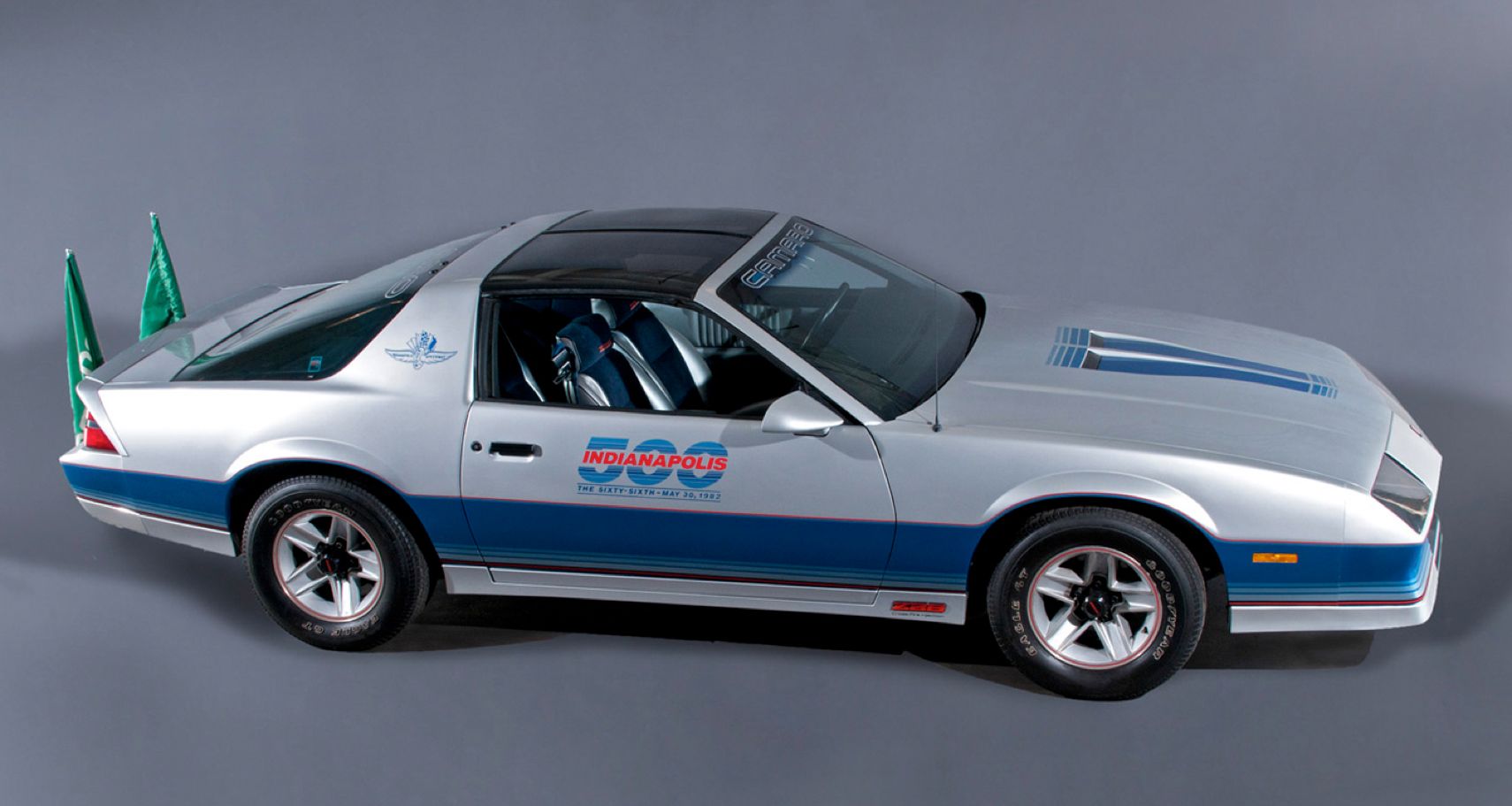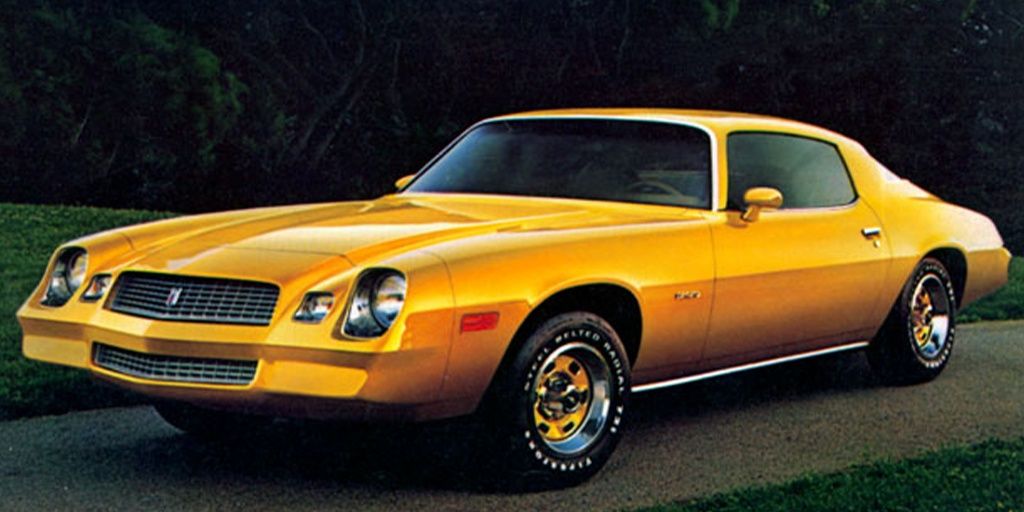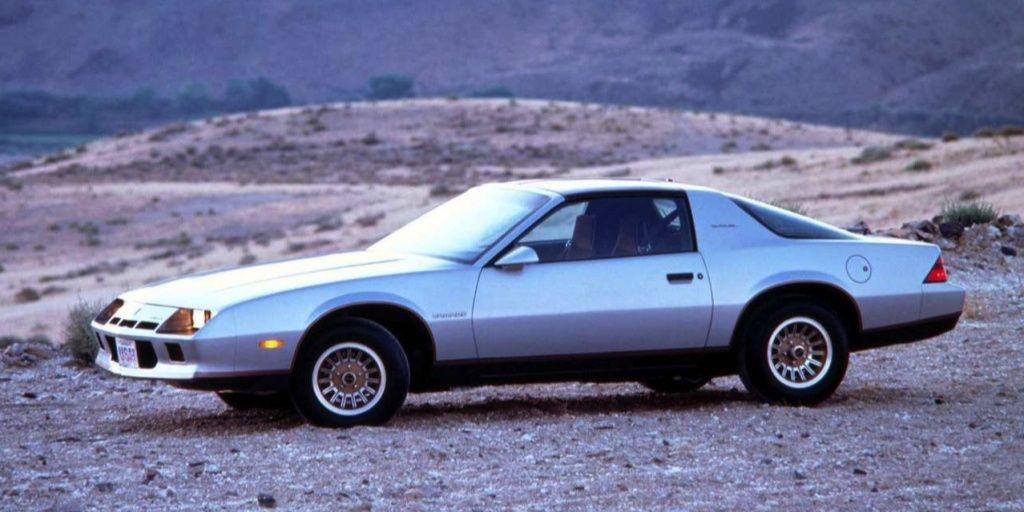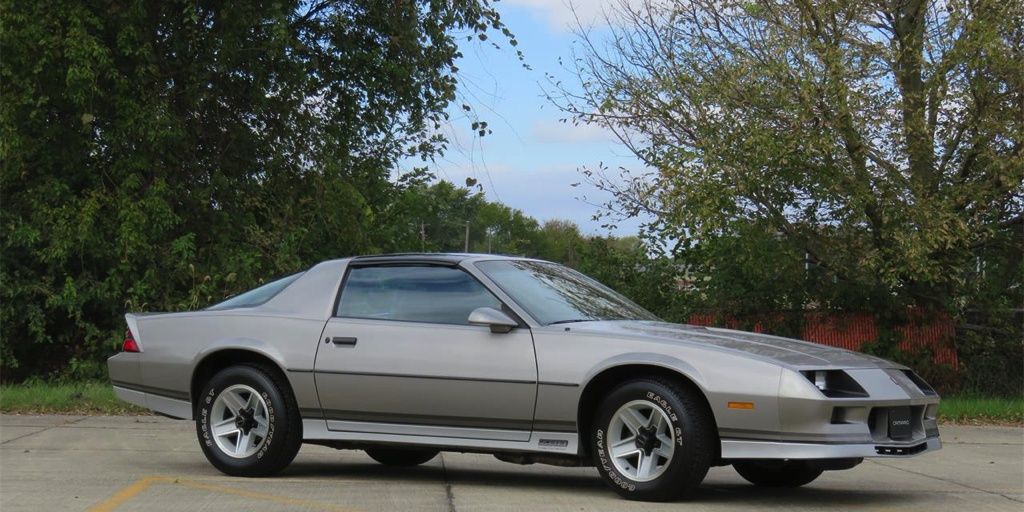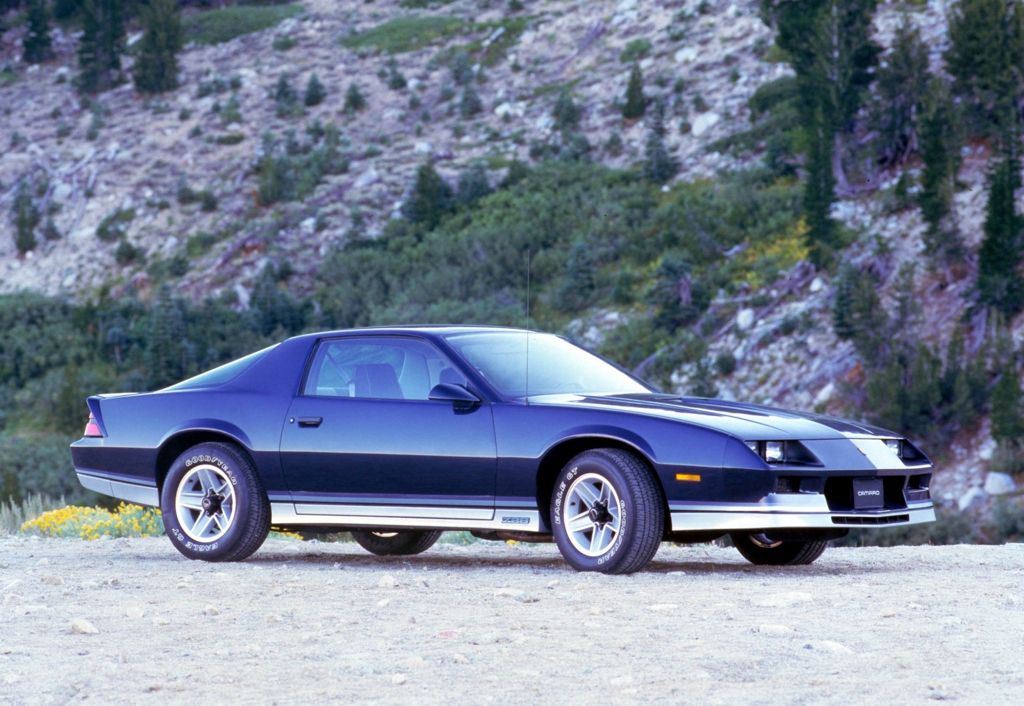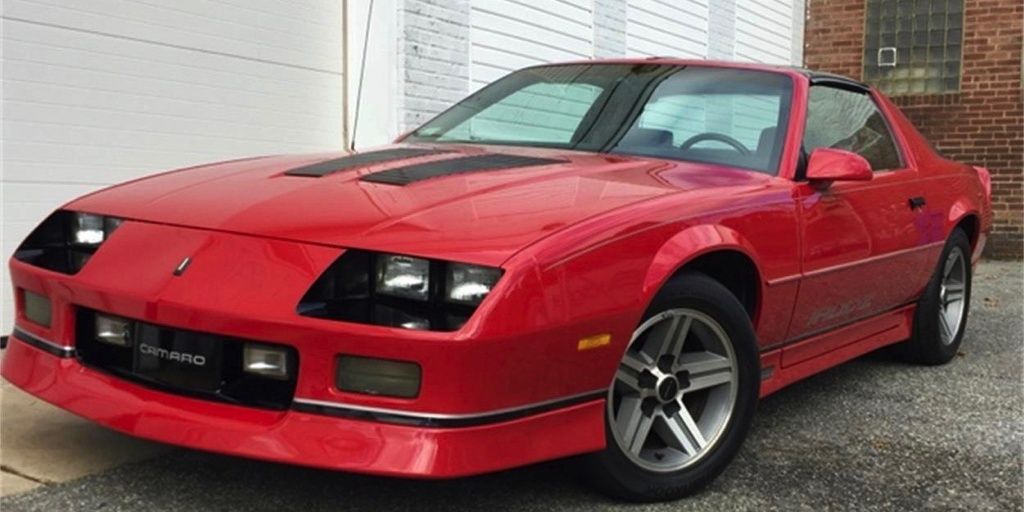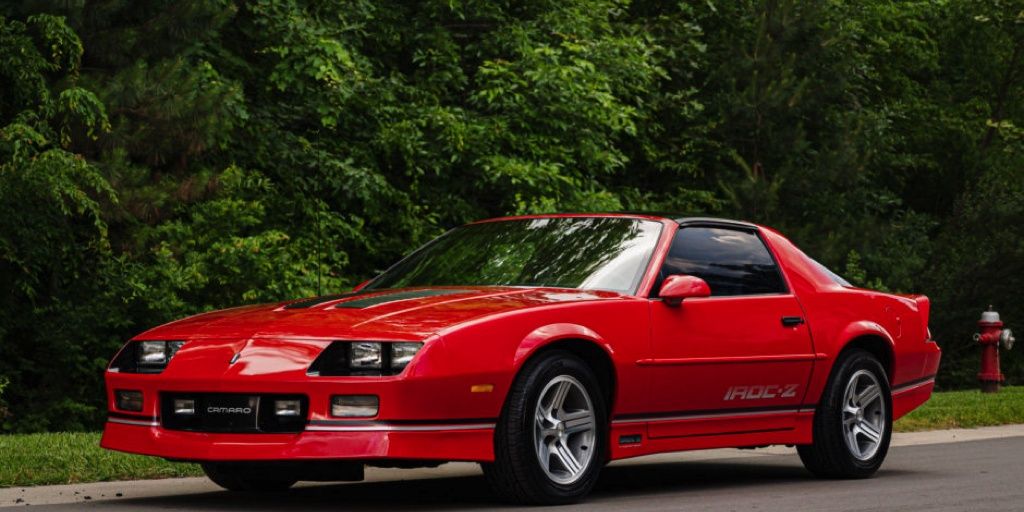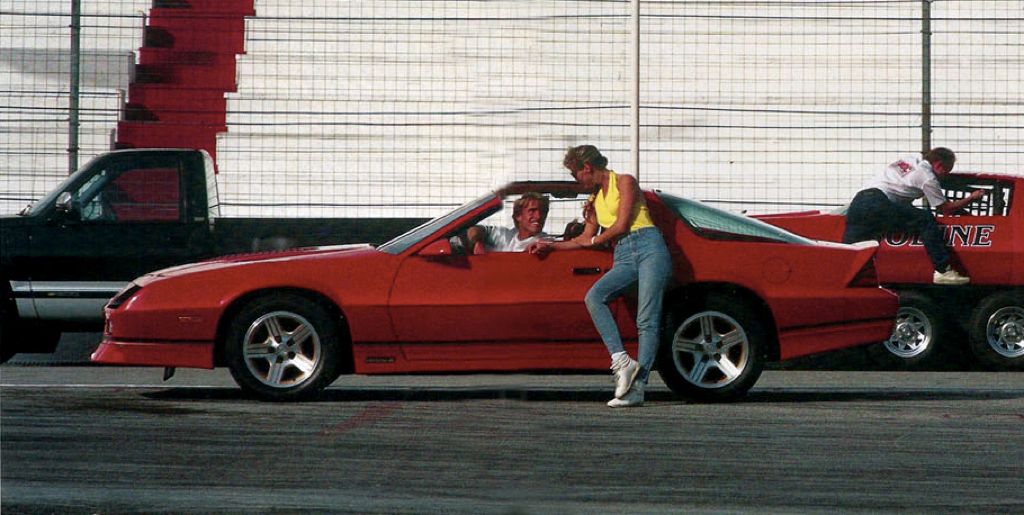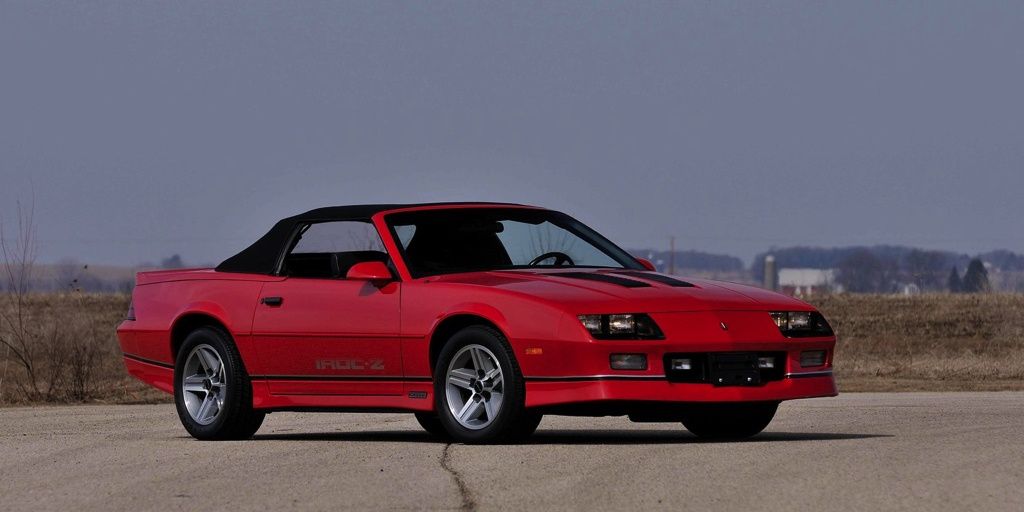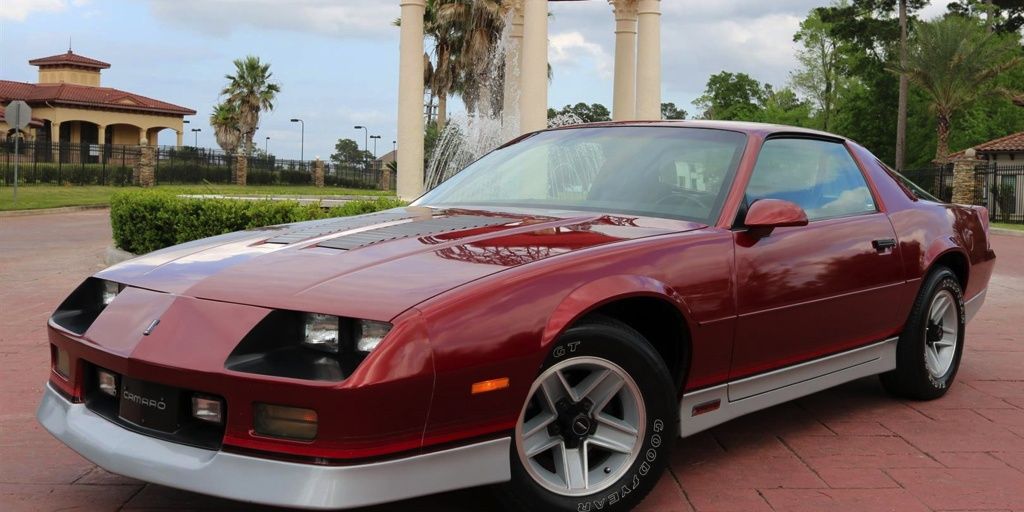Chevrolet’s pony car spent the beginning of the ‘80s playing second fiddle to its corporate sibling the Pontiac Firebird, and especially the Trans Am. But a thoroughly modern makeover turned the Camaro into a must-have muscle car every bit as popular as the T/A was in the 70s. Over the decade, the Camaro also turned itself into a modern sports coupe, adopting fuel injection for all its engines, and even offering a futuristic instrument and dash layout for some buyers.
But pony car buyers were beginning to discover Asian alternatives, as well as more practical “hot hatches” such as the Volkswagen GTI and Ford’s Escort GT. As a result, Camaro sales slumped through the decade, despite updates and improvements virtually every year. Here’s a rundown of the best and worst Camaros through the decade.
10 1981
Looking back, this year’s Camaro felt like it was running out the clock. The final year for the second-generation pony car was available in base, Berlinetta and Z28 models; the RS was gone again. The 81s sales brochure described the Camaro as being practical to drive and own, which given the cramped back seat and tiny trunk seem like a controversial assertion.
The Z28’s 5.7-liter (350 ci) V8 was down to 175 horsepower, thanks to new emissions standards, and was only available with an automatic; members of the Manual Preservation Society had to settle for a 5.0-liter (305 ci) V8 and ten fewer horsepower. On the bright side, power brakes finally became standard on all Camaros.
9 1980
Chevrolet continued to lavish attention on the Z28 after its two-year hiatus in the middle of the 70s. The hottest edition of the bow tie pony car got a refreshed look with bold new graphics, more streamlined fender vents and a functional air-induction hood atop the 185-horsepower 350 V8.
To replace the 60s-era straight-six, Camaro’s new base engine was a Chevy-designed 3.8-liter (229 ci) V6, which was the same size as the Buick V6 from that period, but with which it shared exactly no parts, because that made sense. Camaro also got a new optional V8; a further re-boring of the small-block V8 displacing 4.4 liters (267 ci) and producing just 120 horsepower.
8 1982
The first all-new Camaro since 1970 broke cover in late 1981, and would set the stylistic tone for Chevy’s pony car into the 2000s. Outside, its sleek and streamlined shape attracted a lot of attention. Inside, the dashboard with its unique dual-needle speedometer and (on cars without a tach) fuel gauge was dramatic and driver-focused.
However, Chevy’s decision to put the 350 V8 on hiatus meant the biggest engine in any Camaro was the Z28’s 165-horsepower 5.0-liter “Cross-Fire Injection” V8. Fortunately, GM dropped a more powerful engine into the handsome silver-over-light-blue Z that paced the 1982 Indianapolis 500.
7 1983
In the second year of the third generation, Chevrolet focused on refining Camaro's details. Inside, new custom upholstery gave the Z28’s optional “Conteur” multi-adjustable seat (no, we don’t know why it’s spelled that way either) with colorful “Camaro” spectrum-style printing on the seat backs and cushions. Underneath, Chevy finally made a five-speed manual transmission available on all Camaros except the Cross-Fire Injection 5.0, which was only available with a four-speed automatic.
This was also the first year that Camaro buyers could not order their cars with whitewall tires from the factory ... as a key automotive fashion accessory approached the end of the line.
6 1984
The big news with the Camaro was Chevy’s sudden decision to drop some money on the Berlinetta trim line. The “luxury” Camaro got a specific new interior for 84, including a de rigueur digital instrument cluster, unique control pods on either side of the steering wheel, and a wacky but incredibly practical swivel radio/cassette. The components were shared with no other GM product, and gave the Berlinetta an interior to match the Nissan 300ZX and Toyota Supra.
At the top of the option list, the Z28’s high-output 5.0-liter V8 was now pumping out 190 horsepower, which was enough to distract potential buyers from the fact that the mostly-unloved “cross-fire” injected V8 was gone, never to return.
5 1985
Somehow, Bowling For Soup’s lost-youth anthem “1985” did not name-check Camaro’s new IROC-Z trim package, which in retrospect can only be seen as an egregious oversight. Checking the IROC box gave the Z28 a monochrome paint treatment, bigger wheels and tires and specific suspension components.
The IROC’s first year threatened to overshadow the biggest functional upgrade: the arrival of multi-port fuel injection atop the 5.0-liter V8. The available “Tuned Port Injection” V8 made 215 horsepower, which was a welcome upgrade over the carbureted version. Berlinetta and Sport Coupe (base) buyers could still order a four-barrel V8, which arrived in a body featuring refreshed front and rear fascia.
4 1988
Looking back, 1988 on the surface feels like the year Chevrolet gave up on the third-generation Camaro. The LT and Z28 were gone, leaving just the “base” coupe (which came standard with the former Z’s body kit) and the uplevel IROC. The Conteur multi-adjustable bucket seat was long gone because no one was paying extra for it, no matter how much the “spectrum” upholstery made it look like a Recaro.
But in fact, Team Camaro was focusing all its attention under the car, giving buyers a way to spec a virtual race car from the factory. Ordering an IROC with the G92 performance axle triggered the legendary “1LE” performance package, including beefed up suspension and drivetrain equipment and mandatory air conditioning delete. If you find an IROC on Craigslist that doesn’t have A/C, for the love of Pete, BUY IT.
3 1989
Chevy reached back into the Camaro’s past to relabel the base coupe the “RS.” This was the only functional change, as the RS still carried the old Z28 body kit and alloys, with monochrome paint and a choice of regular or “custom” cloth seats.
The Camaro coasted into the end of the 80s much as it began the decade: with few meaningful updates beyond paint and trim, as sales dwindled and engineers focused on the next-gen Camaro set to debut a few years hence.
2 1987
The big pony car news from Chevrolet was the first Camaro convertible since 1969. GM contracted with ASC to convert Camaros into full soft tops at the beginning of drop-top season, becoming a full-year option in '88. This was also the first year that a detuned version of the Corvette's fuel-injected 350 V8 was available on the IROC-Z, though only with an automatic transmission.
Chevy’s experiment in high-technology coupes ran its course this year, as the Berlinetta, its digital dashboard and unique control pods shuffled off this mortal coil. Its replacement was a callback to the past: Chevrolet reintroduced the LT trim level, which was basically the Berlinetta without the complicated interior setup. The other major change was the disappearance of the 2.5-liter “Tech 4” engine: the new standard engine was the by-now-familiar 2.8-liter V6.
1 1986
So why is this the pinnacle of Chevy’s pony car in the 80s? Well, it’s all about choice. The IROC-Z was burning up drive-thru lanes with its “tuned port injection” V8, the Z28 was holding it down against the Mustang GT, the Berlinetta had the “tech” corner covered with its digital dash and unusual control layout, and the Sport Coupe was the value leader, with four, six, and eight-cylinder engine options.
But GM was finding that despite having a Camaro for almost everyone, fewer people were buying them. In just a few years, the model line would shrink to just two levels, and by the early 2000s the Camaro would go on hiatus until GM could find a suitable platform for it in 2010.

